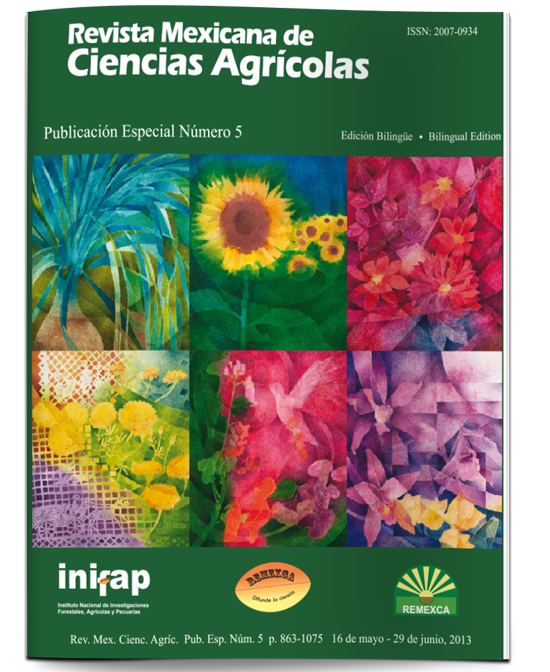Allometry of native Mexican Jatropha curcas L. seeds
DOI:
https://doi.org/10.29312/remexca.v0i5.1302Keywords:
Mexican Jatropha curcas, seeds, morphologyAbstract
This work presents a comparative morphological study of four Mexican sources. Three non-toxic, non-commercial sources from the state of Veracruz (Papantla, Medellín and Alvarado) and one toxic provenance belonging to a commercial plantation in the state of Colima (Tecomán), were analyzed over two years. An average of 480 seeds per provenance, per year were characterized by estimating their phorbol-ester contents, determining their sizes and weights, correlating data between kernel weight versus total seed weight, documenting their agronomic conditions and comparing them with other Mexican sources. Significant differences were found in seed morphology per provenance (p< 0.05). Larger and heavier seeds were found in Papantla (760 mg in average) and Tecoman (746 mg), where environmental conditions were better than in Medellin (651 mg) and Alvarado (686 mg). Seed length was the parameter that had the highest positive correlation with weight (p> 0.86) and seed volume had the lowest coefficient of variation (CV< 4.5%) for all sources. Apart from genetic factors, weight and size could also be related to crop management practices and soil fertility, since the largest and heaviest seeds came from the more fertile soils or fertilized and irrigated plantations, while the smallest and lighter seeds came from semi-wild sources located in sandy soils.
Downloads
Downloads
Published
How to Cite
Issue
Section
License
The authors who publish in Revista Mexicana de Ciencias Agrícolas accept the following conditions:
In accordance with copyright laws, Revista Mexicana de Ciencias Agrícolas recognizes and respects the authors’ moral right and ownership of property rights which will be transferred to the journal for dissemination in open access. Invariably, all the authors have to sign a letter of transfer of property rights and of originality of the article to Instituto Nacional de Investigaciones Forestales, Agrícolas y Pecuarias (INIFAP) [National Institute of Forestry, Agricultural and Livestock Research]. The author(s) must pay a fee for the reception of articles before proceeding to editorial review.
All the texts published by Revista Mexicana de Ciencias Agrícolas —with no exception— are distributed under a Creative Commons License Attribution-NonCommercial 4.0 International (CC BY-NC 4.0), which allows third parties to use the publication as long as the work’s authorship and its first publication in this journal are mentioned.
The author(s) can enter into independent and additional contractual agreements for the nonexclusive distribution of the version of the article published in Revista Mexicana de Ciencias Agrícolas (for example include it into an institutional repository or publish it in a book) as long as it is clearly and explicitly indicated that the work was published for the first time in Revista Mexicana de Ciencias Agrícolas.
For all the above, the authors shall send the Letter-transfer of Property Rights for the first publication duly filled in and signed by the author(s). This form must be sent as a PDF file to: revista_atm@yahoo.com.mx; cienciasagricola@inifap.gob.mx; remexca2017@gmail.
This work is licensed under a Creative Commons Attribution-Noncommercial 4.0 International license.



